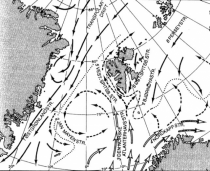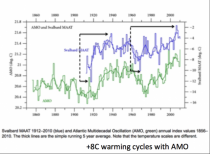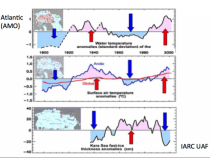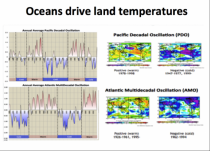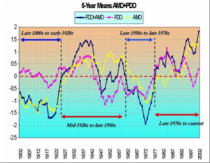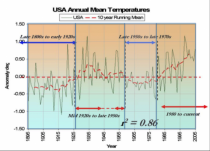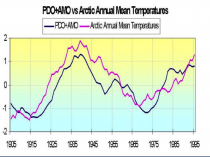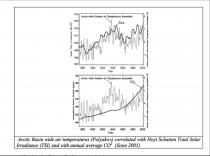Joseph D’Aleo, CCM
The Science Channel on Discovery is an enjoyable and educational channel and covers many topics including about the universe and earth’s anomalies and mysteries.
They featured a recent show on Svalbard, an island in the far North Atlantic. The island sits between 77 and 81N It’s climate varies as it sits in a regions where warm currents from south, and colder currents from the north and northeast converge. And these currents vary on decadal cycles.
The story interviewed inhabitants and scientists about the recent warming since 1970, said by some to be the largest on earth and often attributed to greenhouse driven global warming. Alarmists have referred to it as the Canary in the coal mine.
There has been warming from 1970 to 2010s but it mirrors the warming from 1910 to 1940 (both about 8F). Both cycles track with the 60 year North Atlantic Oscillation (AMO).
Svalbard had an 8F warming in the last 2 warm intervals and a 7C cooling in the cooler phase. The AMO is nearing the end of its warm phase and with aid of the declining solar cycles 24 and 25 and the next overdue major volcanic eruption should begin it decline this decade.
The AMO cycle is depicted here by Ole Humlum (Climate4you).
See the cold phase is cold in the arctic and Atlantic (and globally on average). The warm cycle is warm though it favors the -NAO which can deliver cold and snow to the east.
See how the warm water is carried under the arctic ice during the warm part of the cycle, thinning the ice and reducing its extent. In the cold cycle, the melting from beneath is less and the ice extent expands.
The late great Bill Gray felt the AMO would return negative around or soon after 2020.
See THE REST OF THE STORY here.
The Pacific goes through decadal cycles too. The PDO has a similar positive is warm globally and negative cool.
It is is closely linked to the El Nino and La Nina. The ENSO events are longer, stronger and more frequent in the coinciding warm or cold phases.
Though the cycles are out of phase, when they both are either cold or warm, the temperatures globally follow.
Both the Atlantic and Pacific play a role in arctic ice, like we saw in Svalbard in the Atlantic sector.
Dr. Willie Soon showed the solar TSI matches arctic cycles not CO2.



